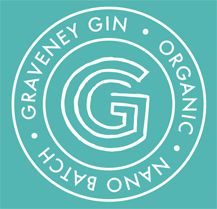
Gearing Up 4 Gorillas' (G4G) is the only UK charity that focuses 100% on the conservation of the mountain gorilla in Virunga National Park, eastern DR Congo, through providing funds and equipment to the rangers whose job it is to protect them.

Gearing Up 4 Gorillas' (G4G) is the only UK charity that focuses 100% on the conservation of the mountain gorilla in Virunga National Park, eastern DR Congo, through providing funds and equipment to the rangers whose job it is to protect them.
 The Congolese Institute for the Conservation of Nature has a long history. It was formed in 1925, coinciding with the designation of Virunga National Park – the first National Park in Africa.
The Congolese Institute for the Conservation of Nature has a long history. It was formed in 1925, coinciding with the designation of Virunga National Park – the first National Park in Africa.
Roughly translated, ICCN has as its vision
‘to ensure the effective management and co-ordination of the network of Protected Areas for the sustainable conservation of biological diversity and ecosystems of the Democratic Republic of Congo’.
Since 1925, ICCN has always been revered around the world as a highly effective authority, with an enormous task to perform. ICCN employs the rangers whose job it is to protect, conserve and manage the nations many National Parks, reserves and other sites of conservation interest.
Today, the rangers of ICCN continue to be greatly respected by the conservation authorities, non-governmental conservation bodies and ranger colleagues around the globe, for their knowledge, experience, commitment and dedication.
ICCN manages seven National Parks and sixty three reserves. The National Parks and reserves are home to a huge variety of flora and fauna that would be impossible to list here.
Some key species, however, are given below for the seven National Parks, along with the area covered by each, the management problems and an estimate of the number of rangers stationed there, where given by ICCN:
 8,000 square kilometers; home to the critically endangered mountain gorilla, forest elephant, hippo, buffalo and a huge variety of birdlife.
8,000 square kilometers; home to the critically endangered mountain gorilla, forest elephant, hippo, buffalo and a huge variety of birdlife.
Challenges include illegal charcoal production, high population numbers including many refugees, intense poaching and many rebel groups; 650 rangers.
 6,000 square kilometers; home to the endangered eastern lowland gorilla, chimpanzee, colobus, elephant, buffalo, many antelope species and birds.
6,000 square kilometers; home to the endangered eastern lowland gorilla, chimpanzee, colobus, elephant, buffalo, many antelope species and birds.
Challenges include grazing pressures, rebel groups and illegal mining, especially for coltan (used In IT equipment, PDAs and mobiles).
(Ranger numbers unknown)
 36,000 square kilometers; the largest tropical forest Protected Area in the world (approximately the size of Belgium); home to the endangered bonobo (or pygmy chimpanzee) which is endemic to (only found in) DRC; hippo, forest elephant, pangolin, grey parrot and many reptiles.
36,000 square kilometers; the largest tropical forest Protected Area in the world (approximately the size of Belgium); home to the endangered bonobo (or pygmy chimpanzee) which is endemic to (only found in) DRC; hippo, forest elephant, pangolin, grey parrot and many reptiles.
Challenges include pressures associated with human populations, especially hunting for bushmeat. (Ranger numbers unknown)
5,000 square kilometers; contiguous with Lantoto National Park in Sudan; rangers were sadly unable to save the northern white rhino from extinction here in mid 2008, northern giraffe, kob and many other species of antelope. Challenges associated with proximity to insecurities in southern Sudan, rebel groups and hunting; 190 rangers.
10,000 square kilometers; home to the endemic okapi, eastern lowland gorilla and endangered Congolese peacock. Challenges centre around intense rebel occupation, making security for the Park untenable; 49 rangers.
10,000 square kilometers; together with Kundelungu National Park, home to the last zebra; elephant, buffalo, many antelope and bird species. Heavy poaching at levels that render populations below breeding capacity; 128 rangers.
 7,600 square kilometers; buffalo, many antelope; bushbuck, kudu, the only Park known to have hosted cheetah. Challenges centre around very severe poaching; 50 rangers.
7,600 square kilometers; buffalo, many antelope; bushbuck, kudu, the only Park known to have hosted cheetah. Challenges centre around very severe poaching; 50 rangers.
Five sites within DR Congo are each also designated a ‘World Heritage Site – in Danger’: Virunga, Kuhuzi-Biega, Salonga and Garamba National Parks together with the 13,700 square kilometer Okapi Wildlife Reserve.
 The ICCN has the okapi as part of its logo.
The ICCN has the okapi as part of its logo.
Only found in DR Congo, the okapi is giraffe-like but with a much shorter neck and rear quarters that are ‘zebra-like’. It is an extremely shy creature, spending much of its life as a solitary animal, deep in the forest.
The okapi (right) has had official protection since 1933, but the pressure for agricultural land, timber and particularly bushmeat, has led to rapidly dwindling numbers. The future of the okapi is uncertain.
Sign up to our g-bulletin for all the latest news:
G4G is immensely grateful to Graveney Gin and Banana Phone for their generous, ongoing support:


© Copyright - Gearing Up 4 Gorillas. Registered Charity No: 1111663 | Privacy & Cookie Policy
Site design: Jubilee Webdesign